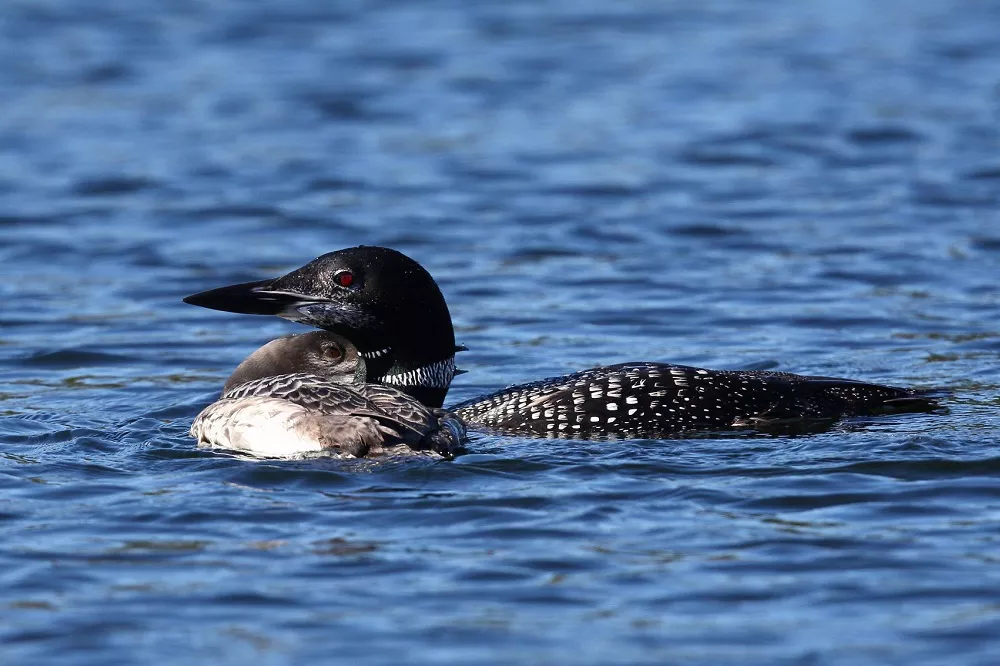The common loon (Gavia immer) is a large, distinctive bird that is found throughout much of North America. Known for their haunting calls, striking plumage, and unique diving abilities, these birds are beloved by many nature enthusiasts. However, one question frequently asked about these fascinating creatures is whether they migrate or not.
Let’s take a closer look at the migration patterns of common loons and how they navigate the challenges of seasonal movements.
Common Loon Migration Patterns
Common loons are known to breed in freshwater lakes across Canada, Alaska, and parts of the northern United States. During the winter, they can be found occupying coastal waters along the Pacific, Atlantic, and Gulf coasts of the United States, as well as in Mexico and the Caribbean.
While some populations of common loons do stay put year-round in northern regions with open water, most do migrate seasonally. In general, loons from more northerly breeding grounds tend to migrate further south than those from southern breeding grounds.
In the fall, as temperatures drop and daylight hours diminish, common loons begin their journey to their wintering grounds. They typically travel at night, using the stars as a navigational guide. This method of navigation is called celestial navigation, and while it may seem surprising, studies have shown that common loons can use the position of the stars to orient themselves within just a few degrees of accuracy.
Once on their wintering grounds, common loons will remain there until spring arrives, at which point they will begin their return journey to their breeding grounds. During migration, common loons may face various challenges, including storms, habitat loss or degradation, and human-caused threats such as pollution and collisions with boats.
Migration to Wintering Grounds
As winter approaches and the lakes freeze over, common loons embark on their remarkable migratory journey to their wintering grounds. The timing of migration varies based on factors such as weather conditions, food availability, and individual circumstances. Generally, migration begins in the late fall or early winter.
Migration Routes and Distances
Common loons undertake long-distance migrations, traveling from their northern breeding grounds to their southern wintering grounds. The specific migration routes can vary, but common loons from North America typically migrate towards coastal areas of the Atlantic Ocean or the Gulf of Mexico.
The migration distances can be substantial, ranging from a few hundred miles to over a thousand miles. Individual loons may also exhibit fidelity to specific wintering locations, returning to the same area year after year.
Reasons for Migration
Migration serves several crucial purposes for common loons:
Food Availability: The primary reason for migration is the search for food. During the winter months, when northern lakes freeze, the availability of their preferred prey, such as fish, becomes limited. By moving to open coastal areas, common loons can access a wider range of food sources.
Overcrowding and Competition: Common loons establish breeding territories on lakes during the summer. As the breeding season ends, these territories become crowded, and competition for resources increases. Migrating to wintering grounds allows loons to disperse and avoid territorial conflicts.
Climate and Habitat Conditions: Harsh winter conditions and frozen lakes can make it challenging for loons to find suitable habitat and food. Migrating to warmer coastal areas provides more favorable conditions and ensures their survival during the winter months.
Adaptations for Migration
Common loons possess several adaptations that aid in their migratory journeys:
Flight Abilities: Loons have strong wings and streamlined bodies, enabling them to fly long distances swiftly. They can cover significant distances during migration, using a combination of powered flight and gliding.
Navigation Skills: Common loons rely on a combination of celestial cues, such as the position of the sun and stars, and their keen sense of geographic landmarks to navigate during migration. They can also sense the Earth’s magnetic field, which helps them maintain their intended course.
Conclusion
In conclusion, common loons do migrate seasonally from their breeding grounds in Canada and Alaska to wintering grounds along coastal waters of the United States, Mexico, and the Caribbean. These fascinating birds use celestial navigation to guide them along their journey and face various challenges during migration. While currently listed as a species of least concern, conservation efforts must continue to ensure that common loon populations remain healthy and stable for generations to come.
Related Topics:
- What Do Common Loons Eat?
- What does a Common Loon look like?
- Canada’s National Bird: The Common Loon


 Facebook
Facebook  Instagram
Instagram  Youtube
Youtube 